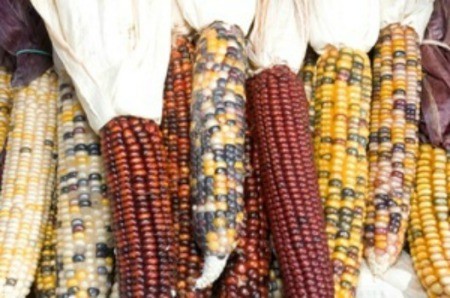
Many gardeners are surprised to learn that there's no special secret to growing Indian corn. If you can successfully grow sweet corn in your garden, then you can grow Indian corn, too. If you normally use Indian corn as part of your fall decorating scheme, instead of boxing it up and putting it into storage until next year, why not use some of it as seed corn for next year's garden?
Historically speaking, Indian corn, also known as Calico corn or Flint corn, is a grain native to the Americas. The rise of corn as a staple in Western diets came only after Native Americans gave seeds to early English colonists, teaching them how to grow and harvest it. When distinguishing it from other grains, the colonists referred to it as "Indian corn" because it was so unlike any of the grains they were used to eating back in England. Needless to say, Indian corn quickly caught on and the rest is history. Today, the United States uses more farmland to grow corn than it uses to grow any other grain.
At the end of the fall season, simply select the largest, best looking ears of corn and put them into plastic bags until next spring. Make sure the bags are airtight and tuck them into a dark cupboard or your pantry. If you're not using Indian corn for fall decorating, seeds are available online (heirloom varieties are best) or you can find seeds and dried cobs at garden centers, feed stores, harvest festivals, or from farmer's markets.
The growing requirements for Indian corn are essentially the same as they are for other types of corn. The biggest difference is probably the length of growing season needed. Start your Indian corn as soon as possible in the spring. Most types of ornamental corn require at least three months or more to reach maturity.

About The Author: Ellen Brown is an environmental writer and photographer and the owner of Sustainable Media, an environmental media company that specializes in helping businesses and organizations promote eco-friendly products and services. Contact her on the web at http://www.sustainable-media.com
Add your voice! Click below to comment. ThriftyFun is powered by your wisdom!
I did everything you said to do, but when I picked it the ears were not filled out and the corn was not colored. What happened?
That happened to me a bit this year. I got several filled out ears but many that weren't. I takes time for the color to come out, and if you pick too soon, the kernels may appear white. I tried hand-pollination - taking tassels and "dusting" the pollen onto the silks.
Add your voice! Click below to comment. ThriftyFun is powered by your wisdom!